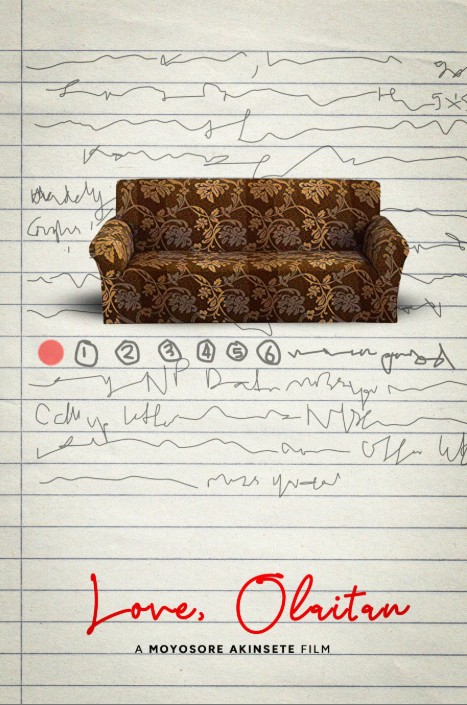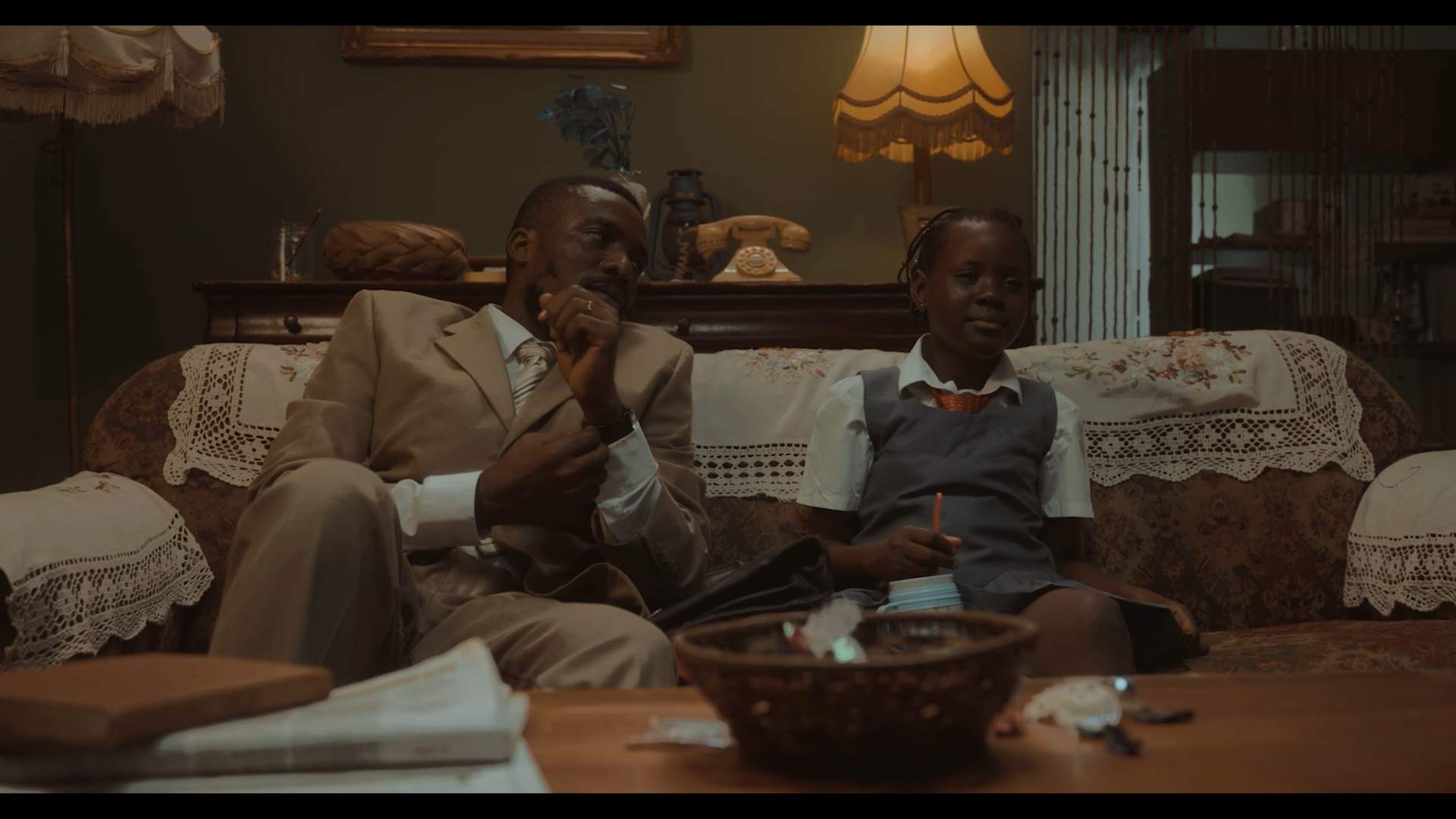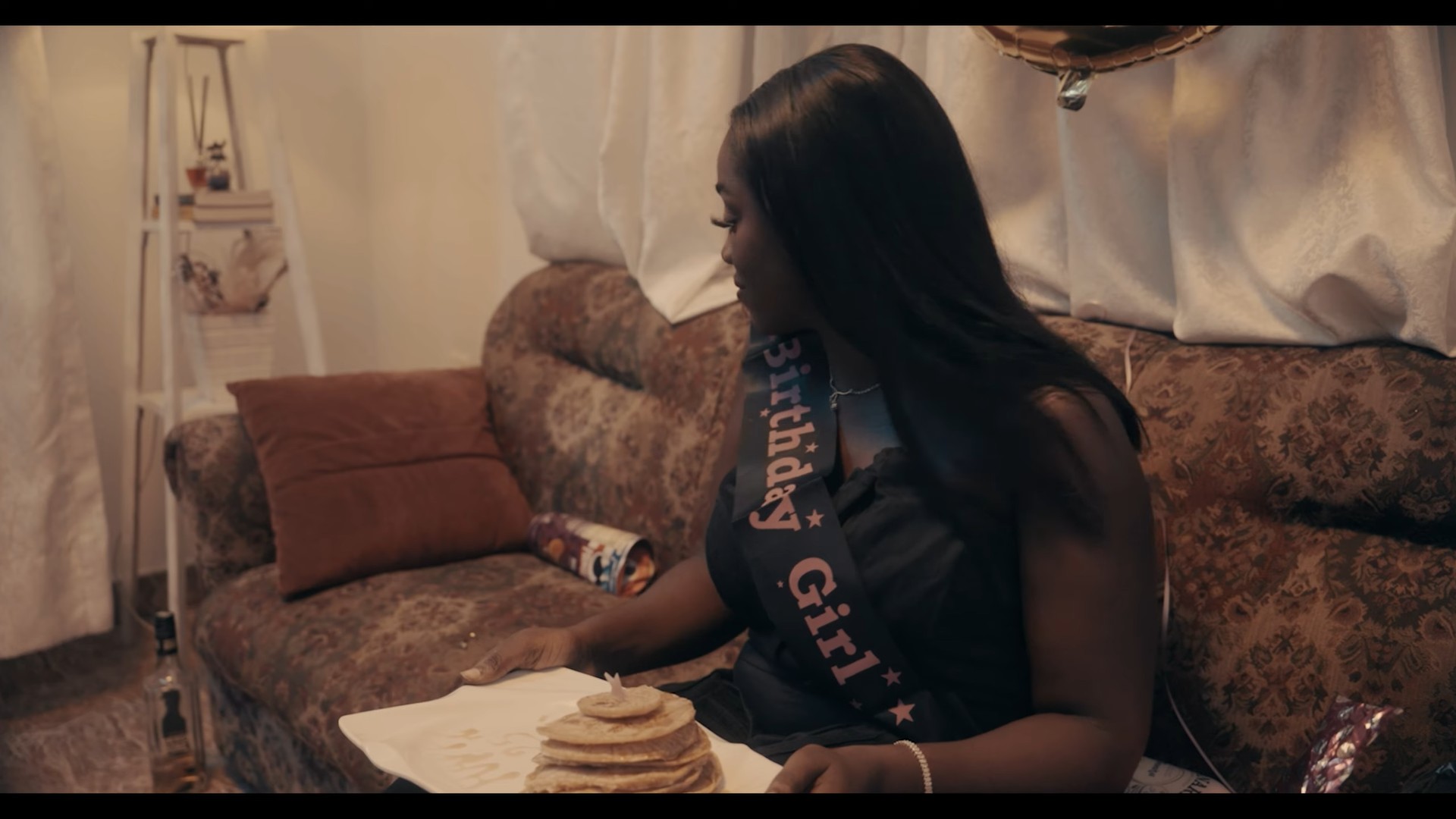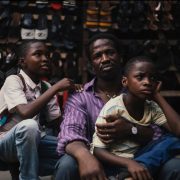Love, Olaitan is a treatise on the bond between father and daughter, but more broadly, a treatise on familial relationships, the intimacy of shared spaces, and the memories that objects hold as well as their place in grief.
By Vivian Nneka Nwajiaku
There are films that catch you unawares. They reach out to you with an ordinariness that disarms you, and they charm their way into your heart, taking you through joy and pain in the most soothing manner. Love, Olaitan (2024) is one of such films, a heartwarming and heart-wrenching portrait of bonds, love, and loss.
A short film written and directed by Moyosore Akinsete (Never Enough), and only her second attempt at directing for screen, Love, Olaitan captures the bond between a daughter and her father as she grows from a child to a woman under his care and, then, in the shadow of his death.
Expectedly, the film unfolds over several years, and the daughter, named Remilekun, is played by different actors at different ages. As a child, Remilekun is played by an endearing Tiwalola Adebola-Walter (I hate it Here (2023), Freedom Way (2024)), and as a teenager, Keziah Abiaka embodies the character with the restless energy and vulnerability of a teen.
Nene Aliemeke (The Origin: Madam Koi Koi (2023); Dead of Night (2024)) takes her on as an adult, now mature but restrained by the cards that life has dealt her. Her father, the titular Olaitan, is played convincingly by Kelvinmary Ndukwe (The Man Died (2024); Sealed (2024)) and voiced by Babajide Oyekunle.
Love, Olaitan opens in 2003. A young Remilekun sits on a couch as it is lowered to the ground by her father and a mover. Her father counts a few old notes, 20 Naira notes still in their paper form (a scene which will later be called back when Remilekun pays in thousands for moving the same couch).
Behind them are a console table, holding their cartons of furniture and other property, and an empty shelf. The mover leaves, and as her father settles into the couch at her request, she huddles closer to him, and he returns the favour―father and daughter, holding on to each other as if they only have each other.

This view forms the setting of the majority of Love, Olaitan, and when the scenery changes, the couch does not. As years go by and life evolves, the couch remains the same, but elements of the background change, items replaced and re-organised, such that even without being told, one can guess what time period each moment is set in, and at which point in their lives the characters are.
In 2003, there’s a kerosene lantern and an antique telephone on the console. In 2011, they are no longer there. A wedding photograph standing on the console is repositioned a couple of times until it is no longer standing. Curtains change.
Decorative pieces are replaced and moved around. This is a real home. One that is familiar. It is a setting that, especially in the current political and economic climate, fills you with nostalgia, both a longing for the ease of childhood, and an appreciation of the difficulties of it.
It is also a reminder of how much things change over time, and how little we pay attention, with Akinsete’s use of minimal space and her focus on objects forcing you to look more closely at the details, at how the exterior life reflects in the interior, and vice versa.
Most importantly, Love, Olaitan is a treatise on the bond between father and daughter, but more broadly, a treatise on familial relationships, the intimacy of shared spaces, and the memories that objects hold as well as their place in grief. How you hold on tightly to objects–like a couch, a wristwatch or a notebook–that keep memories alive, how grief sneaks up on you, and how it changes you and affects your choices.
Love, Olaitan portrays these changes the most in the increasing gloominess of Remilekun’s wardrobe, and in her preference for books that explore love and loss. When she moves into her new apartment in 2021, she’s reading Chimamanda Ngozi Adichie’s Half of a Yellow Sun. Sometime after, she is on Chimeka Garricks’ A Broken People’s Playlist. And shortly after her twenty-fifth birthday, Aiwanose Odafen’s Tomorrow I Become a Woman sits on her table while Jojo Moyes’ The Girl You Left Behind lies conspicuously on her shelf.

It is especially interesting how Love, Olaitan takes its characters–and its audience–on a rollercoaster of emotions with very few words. Rather than dialogue, Love, Olaitan uses gestures and actions, and leans into the more technical aspects of filmmaking: the score and soundtrack, the lighting, the photography, the set design (notwithstanding the 2023 or 2024 newspaper in a scene set in 2003), the costuming, even hair and makeup.
It’s not that the characters do not talk; they do. When a teenage Remilekun throws a book in anger, her father gives her a stern talking to. We can take a good guess at his exact words, but we don’t actually hear them.
Instead, we hear music, with a sharp increase that creates a tense atmosphere before it starts to mellow, the score blending smoothly with external sound that is presumably coming from the offscreen television. The music of Love, Olaitan does not tell you what to feel, but it very much makes you feel.
And so, because of the reliance placed on the sounds of Love, Olaitan in grounding the emotional core of the film, when the music is cut off somewhat abruptly, or when there is actual dialogue (or more appropriately, monologue), it takes you out of the film, even if only briefly.
In particular, there is a scene where Remilekun’s aunt says a few words to her which solicit no verbal response. It is from those words that we know the nature of their relationship and identify her as the adult figure looking after Remilekun after the passing of her father, but the speech comes out of nowhere and almost jolts you out of your seat. Thankfully, the speech has been taken out in the cut that made it to VOD, leaving a cleaner experience with fewer distractions.

The only other occasion of dialogue comes at the ending of Love, Olaitan, interspersed with flashback scenes and ending with a life-changing event in Remilekun’s present day. It’s a voice-over by her father, Olaitan, his voice in Remilekun’s head, as she reads a note he had written to his wife after she died in childbirth. Remilekun’s father, himself, lived with his grief, a man who still wore his wedding ring until his death.
After going through the bulk of the film without dialogue, perhaps Akinsete could have told Olaitan’s own story without that voiceover. But it does serve a purpose in the storytelling of Love, Olaitan. After all, talking is a therapist’s tool for a reason. And Love, Olaitan is some sort of grief therapy, for its characters, its creator and, hopefully, its audience.
Rating: 4/5
(Love, Olaitan screened at both the Africa Film Festival (AFRIFF) and The Annual Film Mischief in 2024. It is now streaming on YouTube.)
Vivian Nneka Nwajiaku is a writer, film critic, TV lover, and occasional storyteller writing from Lagos. She has a master’s degree in law but spends most of her time reading about and discussing films and TV shows. She’s particularly concerned about what art has to say about society’s relationship with women. Connect with her on Twitter @Nneka_Viv




